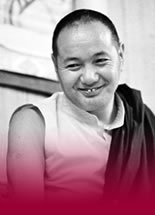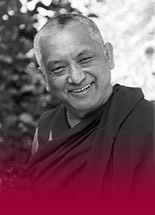Robina’s Blog
21 December, 2022
There’s nothing wrong with finding fault. There is a war in Ukraine, the car did crash, your sister was mean to you, the light was red. They’re facts. But then we get angry. Finding fault and getting angry are completely different mental events but we think they’re the same.
Of course I’m angry, my sister was mean to me! Of course I’m angry, look at the poor people in Ukraine!
So how to distinguish and why does it matter? The function of the delusions – attachment, anger, jealousy and the rest – is to embellish the facts. As Lama Zopa Rinpoche says, the delusions decorate on top of what is there layers upon layers of characteristics that are just not there.
Understanding this is the key to understanding Buddha’s approach to life. He says that we suffer because of these delusions, these embellishments of the facts.
How do they embellish? Anger sees only the bad and exaggerates it and blinds us from seeing the big picture. And, of course, there’s the emotional component: the anger makes us incredibly upset. We think the war in Ukraine makes us upset, but no, it’s the anger that does that.
That’s very surprising and needs thinking about! And to see the difference is not easy. We’re so used to assuming that seeing something is wrong and being angry with it are the same.
It sounds so simple, but when we begin to understand the difference and to slowly apply it, the result is less suffering, quite simply. We become less emotional, less neurotic, less fragile, more stable, more wise – and more empathetic.
The key to understanding anger is to understand attachment. According to the Buddha’s first teaching, the four noble truths, the four facts about life for the noble ones, those who’ve realized it – there is suffering, there are causes, you can get rid of suffering and its causes, and how to do it – effectively attachment is the main cause of suffering in day-to-day life. If so, we’d better understand it.
Attachment is the driving force in all sentient beings: it’s the main voice of ego, the assumption that I must get only the nice things, which means of course getting what I want. So the stronger this expectation, the stronger the panic attack of the aversion, the anger, when it doesn’t happen. We go between these two a thousand times a day.
When it comes to seeing bad things in the world, such as the war in Ukraine, poverty, injustice, and the rest, we need to try to respond like Martin Luther King said: it’s good to see fault – there is injustice, there is racism, there is poverty – but then you say, what can I do to help? So instead of freaking out, worrying, panicking, internalizing the anger and getting depressed, we can channel the energy of anger and turn it into compassionate action.
Anger is huge. It exaggerates, makes things worse, destroys even. And we take it so much for granted as a natural response to things, as if somehow we don’t have a choice, and as if we’d be weird if we didn’t have it.
But we do have a choice. As Lama Zopa Rinpoche says, we can mold our mind into any shape we like. That’s practice.
So start with the simple things like when someone is mean to us or when the red light comes and you’re running late – baby events! See it for what it is, and if there is something we can do to change it, then do it.
If not, then what? No choice, accept it.
It’s bad enough that bad things happen, but why make it all so much worse, so much more complicated, why turn it into trauma by being angry?
As always, one step at a time.

